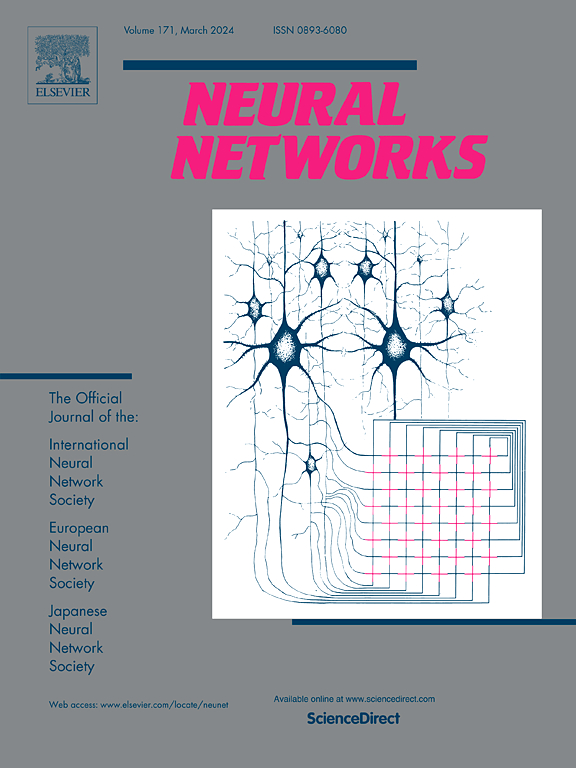PDG2Seq: Periodic Dynamic Graph to Sequence Model for Traffic Flow Prediction
IF 6
1区 计算机科学
Q1 COMPUTER SCIENCE, ARTIFICIAL INTELLIGENCE
引用次数: 0
Abstract
Traffic flow prediction is the foundation of intelligent traffic management systems. Current methods prioritize the development of intricate models to capture spatio-temporal correlations, yet they often neglect the exploitation of latent features within traffic flow. Firstly, the correlation among different road nodes exhibits dynamism rather than remaining static. Secondly, traffic data exhibits evident periodicity, yet current research lacks the exploration and utilization of periodic features. Lastly, current models typically rely solely on historical data for modeling, resulting in the limitation of accurately capturing future trend changes in traffic flow. To address these findings, this paper proposes a Periodic Dynamic Graph to Sequence Model (PDG2Seq) for traffic flow prediction. PDG2Seq consists of the Periodic Feature Selection Module (PFSM) and the Periodic Dynamic Graph Convolutional Gated Recurrent Unit (PDCGRU) to further extract the spatio-temporal features of the dynamic real-time traffic. The PFSM extracts learned periodic features using time points as indices, while the PDCGRU leverages the extracted periodic features from the PFSM and dynamic features from traffic flow to generate a Periodic Dynamic Graph for extracting spatio-temporal features. In the decoding phase, PDG2Seq utilizes periodic features corresponding to the prediction target to capture future trend changes, leading to more accurate predictions. Comprehensive experiments conducted on four large-scale datasets substantiate the superiority of PDG2Seq over existing state-of-the-art baselines. Related codes are available at https://github.com/wengwenchao123/PDG2Seq.
PDG2Seq:交通流预测的周期动态图到序列模型。
交通流预测是智能交通管理系统的基础。目前的方法优先考虑开发复杂的模型来捕获时空相关性,但它们往往忽视了对交通流潜在特征的开发。首先,不同道路节点之间的相关性呈现出动态而非静态。其次,交通数据具有明显的周期性,但目前的研究缺乏对周期性特征的探索和利用。最后,目前的模型通常仅依赖于历史数据进行建模,导致无法准确捕捉交通流的未来趋势变化。为了解决这些问题,本文提出了一种用于交通流预测的周期动态图到序列模型(PDG2Seq)。PDG2Seq由周期特征选择模块(PFSM)和周期动态图卷积门控循环单元(PDCGRU)组成,进一步提取动态实时交通的时空特征。PFSM以时间点为索引提取学习到的周期特征,PDCGRU利用PFSM提取的周期特征和交通流的动态特征生成周期动态图,提取时空特征。在解码阶段,PDG2Seq利用预测目标对应的周期性特征来捕捉未来的趋势变化,从而进行更准确的预测。在四个大规模数据集上进行的综合实验证实了PDG2Seq优于现有最先进的基线。相关代码可在https://github.com/wengwenchao123/PDG2Seq上获得。
本文章由计算机程序翻译,如有差异,请以英文原文为准。
求助全文
约1分钟内获得全文
求助全文
来源期刊

Neural Networks
工程技术-计算机:人工智能
CiteScore
13.90
自引率
7.70%
发文量
425
审稿时长
67 days
期刊介绍:
Neural Networks is a platform that aims to foster an international community of scholars and practitioners interested in neural networks, deep learning, and other approaches to artificial intelligence and machine learning. Our journal invites submissions covering various aspects of neural networks research, from computational neuroscience and cognitive modeling to mathematical analyses and engineering applications. By providing a forum for interdisciplinary discussions between biology and technology, we aim to encourage the development of biologically-inspired artificial intelligence.
 求助内容:
求助内容: 应助结果提醒方式:
应助结果提醒方式:


